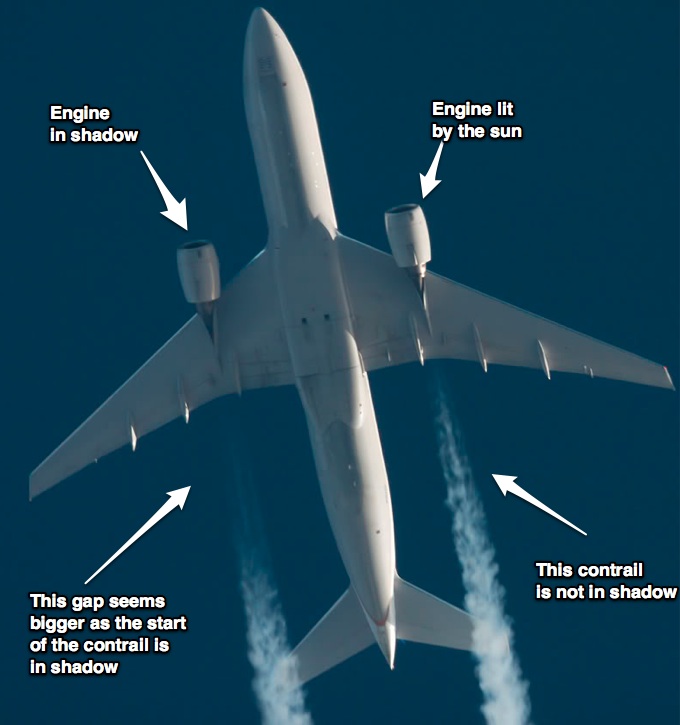marko.posavec
New Member
(Hope this is the proper place to post this)
British Airways 777 leaving a strange contrail yesterday afternoon. It's not the absence of the other trail that bothers me (it's shadowed by the aircraft, just like half of the left-side contrail), what's weird (I think) is the place where the trail begins. There is no gap between the engine and the trail, almost as if the trail starts before the actual exhaust.
Photo was taken July 28, 2023 at 15:20 UTC.
Camera: Nikon D500, Sky-Watcher Maksutov 127/1500
Flight:
British Airways Boeing 777 Mumbai - London as flight BA198
Altitude 36.000 feet, external temperature as reported by Flightradar24 -51°C
Photo is a bit out of focus. I'm trying to recover some more from the card which I already formatted... I wrote them off and only later realized there's something curious about the trail.
Look where the engine #1 trail begins:

Unsharp masked:

A wider view, showing faintly the other contrail and the other part of the curious one. So there:

Unsharp masked #2:

British Airways 777 leaving a strange contrail yesterday afternoon. It's not the absence of the other trail that bothers me (it's shadowed by the aircraft, just like half of the left-side contrail), what's weird (I think) is the place where the trail begins. There is no gap between the engine and the trail, almost as if the trail starts before the actual exhaust.
Photo was taken July 28, 2023 at 15:20 UTC.
Camera: Nikon D500, Sky-Watcher Maksutov 127/1500
Flight:
British Airways Boeing 777 Mumbai - London as flight BA198
Altitude 36.000 feet, external temperature as reported by Flightradar24 -51°C
Photo is a bit out of focus. I'm trying to recover some more from the card which I already formatted... I wrote them off and only later realized there's something curious about the trail.
Look where the engine #1 trail begins:
Unsharp masked:
A wider view, showing faintly the other contrail and the other part of the curious one. So there:
Unsharp masked #2:

